Hands on with visionOS -- using the Apple Vision Pro operating system
The Apple Vision Pro simulator is in the latest beta of Xcode. AppleInsider walks through various apps and the all-encompassing UI of Apple's new spatial computing headset, set to arrive in 2024.
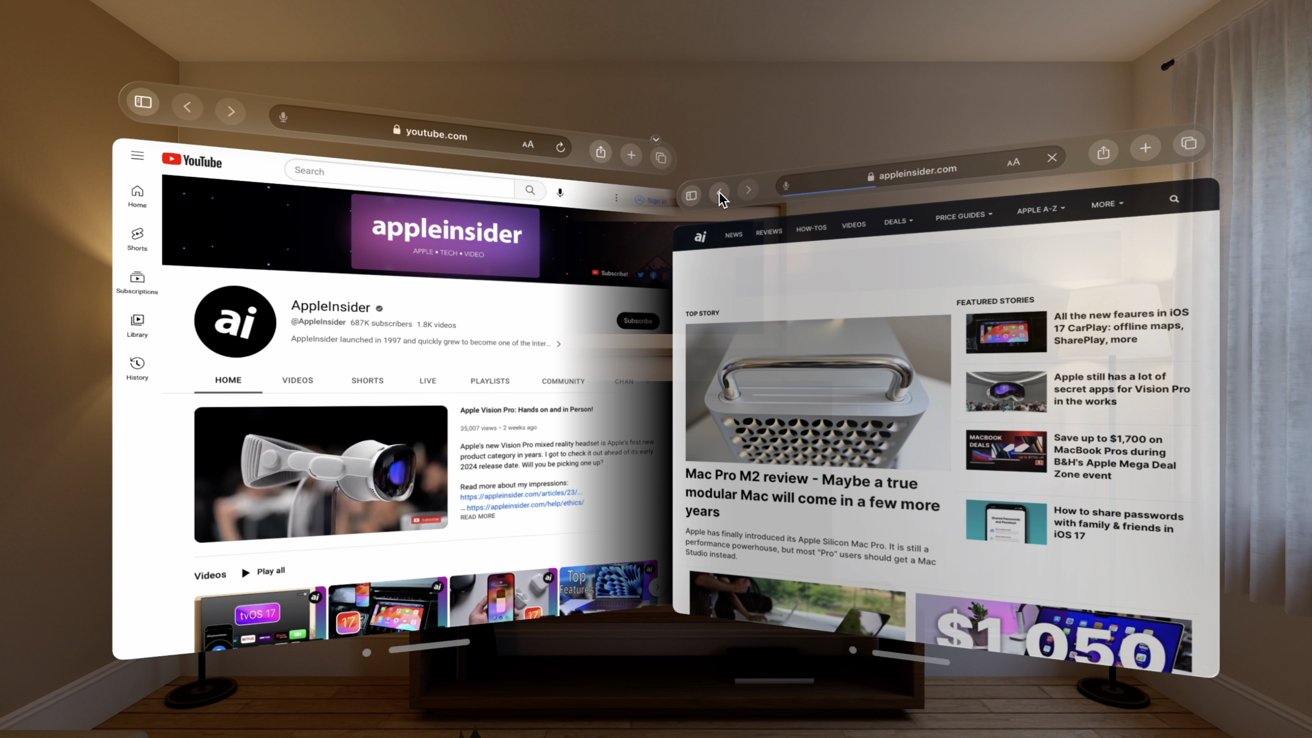
Vision Pro
We got our first look at Vision Pro at Apple Park during WWDC 2023 where we brought you detailed insight into the headset, including a closeup of the hardware.
And now, with the release of the developer software for the headset, we can show you the interface of Vision Pro and its visionOS software.
Navigating visionOS
As you launch into visionOS, you'll see your Home Screen of apps. As you've probably seen from Apple's various marketing videos, it looks like a spatial version of the Apple Watch grid with circular app icons.
There's a dock down the left-hand side to get to other pages on your Home Screen. One page has apps, the second has FaceTime contacts, and the third has different environments you can immerse yourself.

Environments in visionOS
There are 14 environments you can choose from, including Haleakala, Yosemite, sky, spring light, Joshua Tree, Lake Vrangla, Mount Hood, summer light, fall light, the moon, beach, white sands, and winter light.
These environments can replace your living room and transport you as you read, meditate, or work.
Floating near the top, there is a small caret icon that opens up device controls. The caret was exceptionally annoying while using the simulator as we'd inadvertently tap it on accident while trying to work within other applications.
Using the device is better, though, as you have to look at the caret to activate it.
The first icon in the Control Center takes you back to the Home Screen -- a task also accomplished by the Digital Crown. The second icon lets you switch the environmental light.
The last two icons were for Control Center and Notification Center.
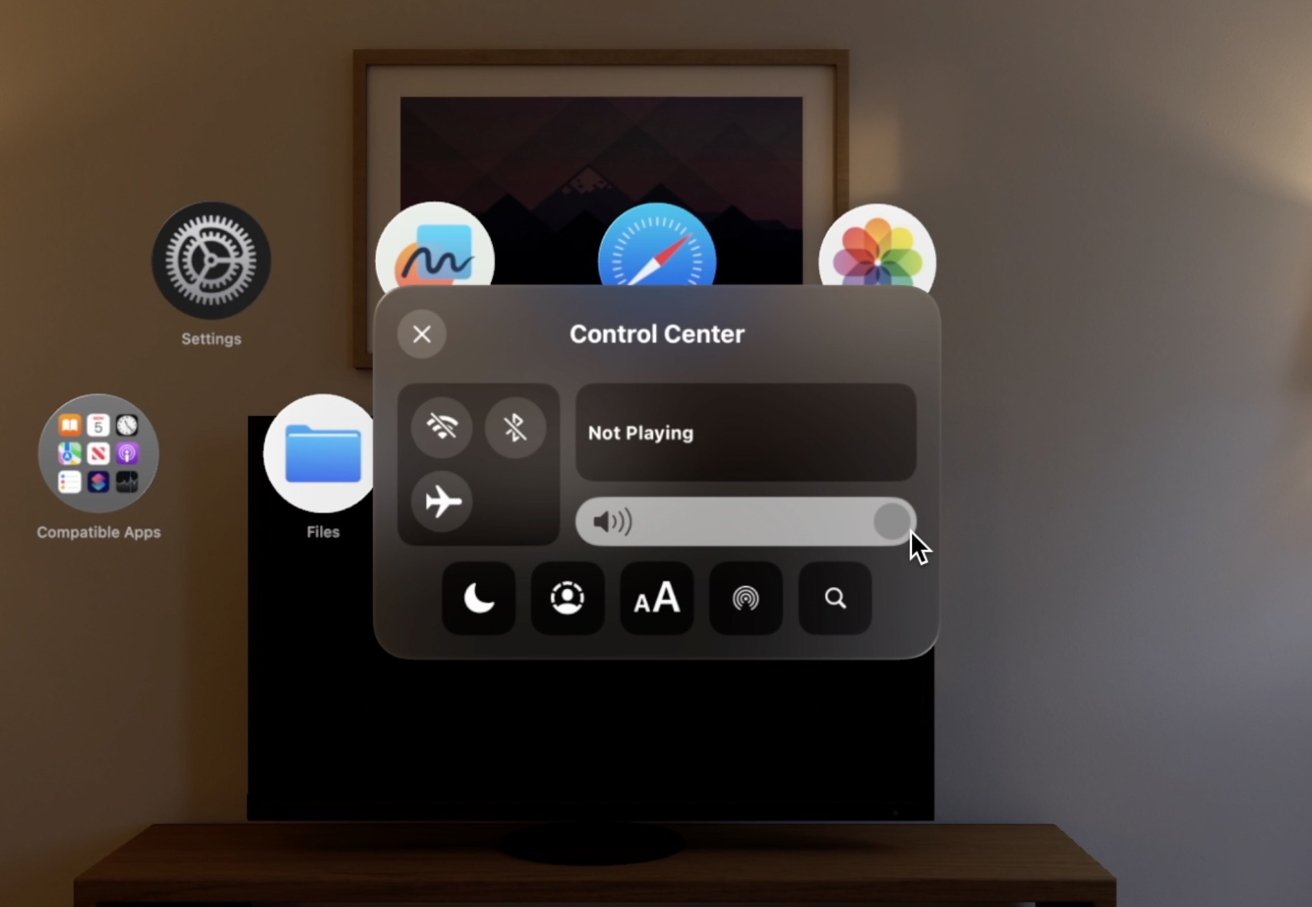
Vision Pro Control Center
Control Center hosts toggles for your usual connectivity methods -- AirPlay, Wi-Fi, Bluetooth, airplane mode, Do Not Disturb, volume -- but also has Spotlight search, a Now Playing widget, and guest mode.
Apple mentioned guest mode at the device's launch as an easy way to let others try your Vision Pro headset. Just enable it and set a passcode that will be good for five minutes.
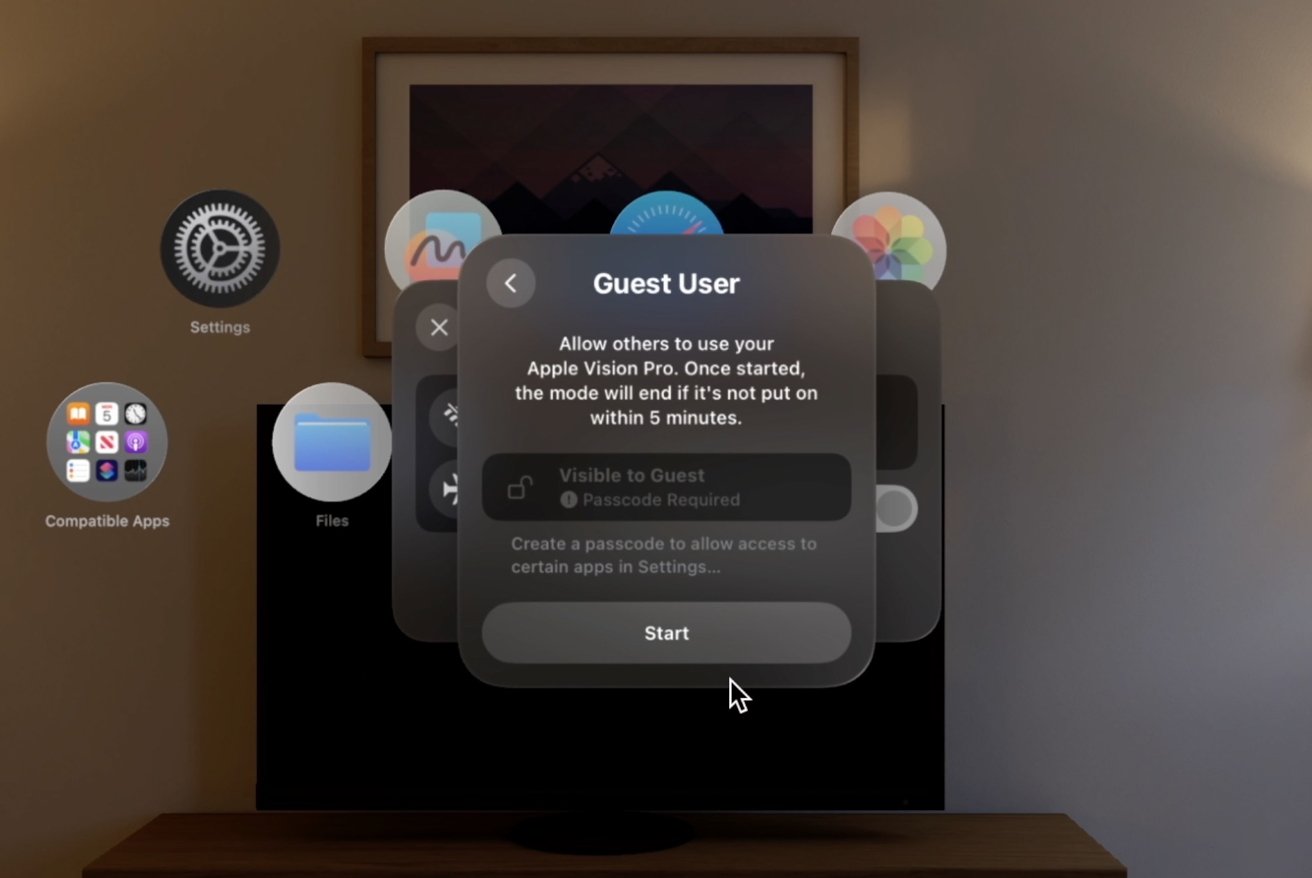
Guest mode on Vision Pro
Assuming they put the passcode in within five minutes, they can test the headset without access to your private data.
When you open an app, it can be closed by hovering over the small dot below the open window. If you select the adjacent bar, you can move the windows around.
Windows can move forward, backward, up, down, or anywhere you need them to move. Multiple windows can be opened and stacked atop one another with the ones that are in the background having decreased opacity.
Using visionOS
In the simulator, the first thing we did was jump into Safari. We loaded up AppleInsider which felt very similar to the iPad. You could hover over the unified search bar where the multiple open tabs would appear.
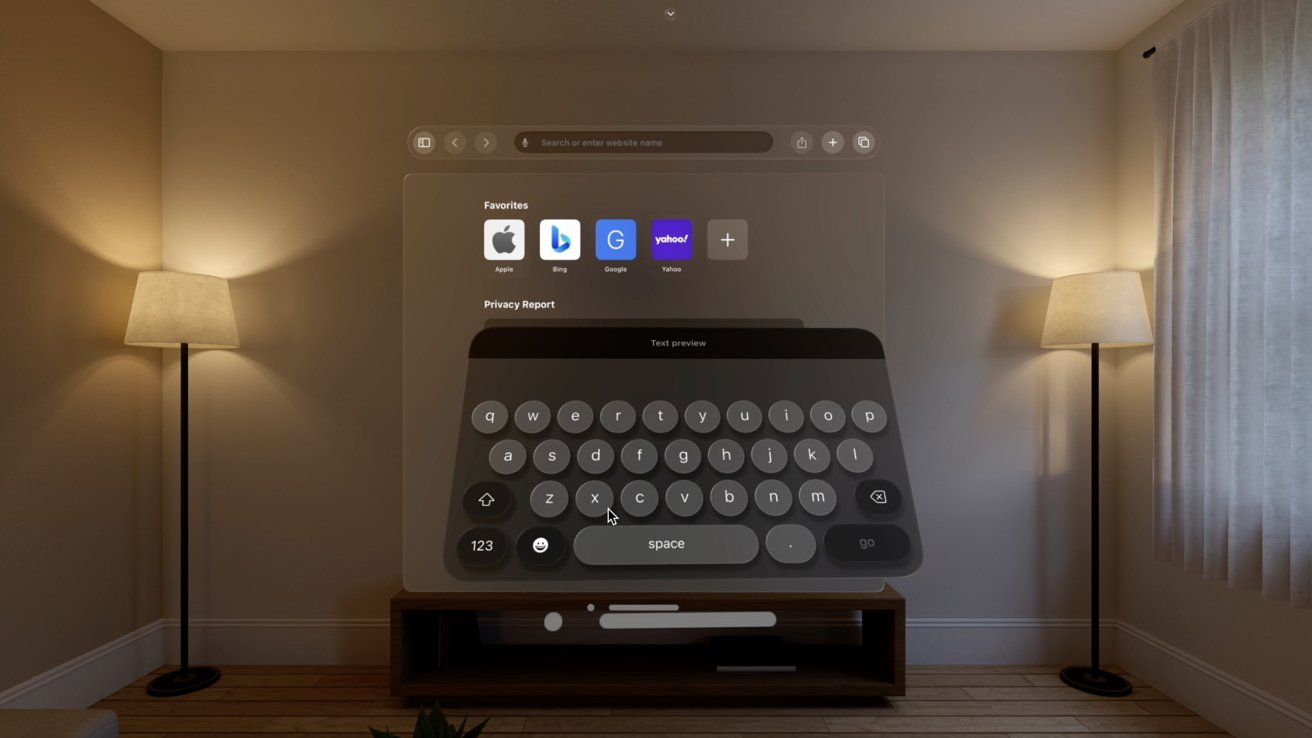
Keyboard on visionOS
Typing is done either via a connected Bluetooth keyboard or you can use the on-screen keyboard that appears to float below the window. Just like windows, the keyboard can be closed or repositioned.
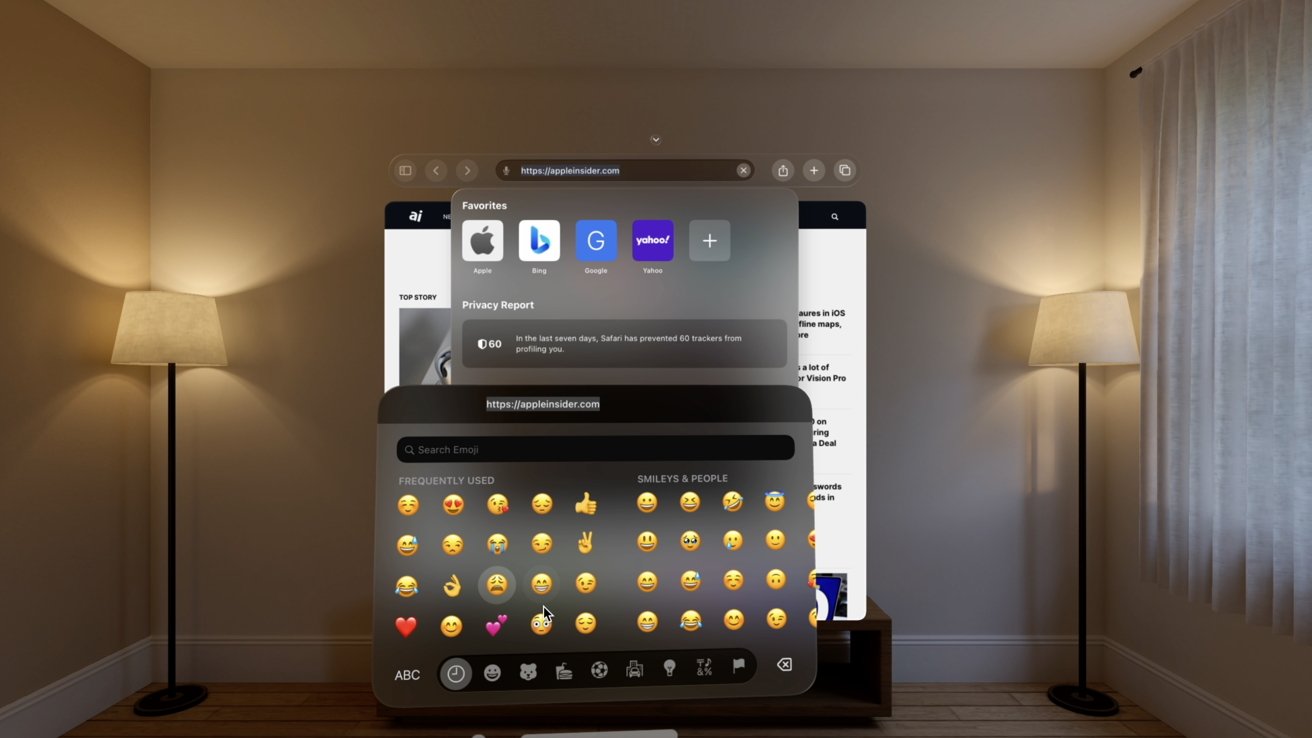
Emoji keyboard on visionOS
Sure enough, Apple has an emoji keyboard in visionOS too. Perfect for using iMessage, email, or social.
We also loaded up Freeform in visionOS. It was cool to see how you could draw on the massive whiteboard in the virtual living room.
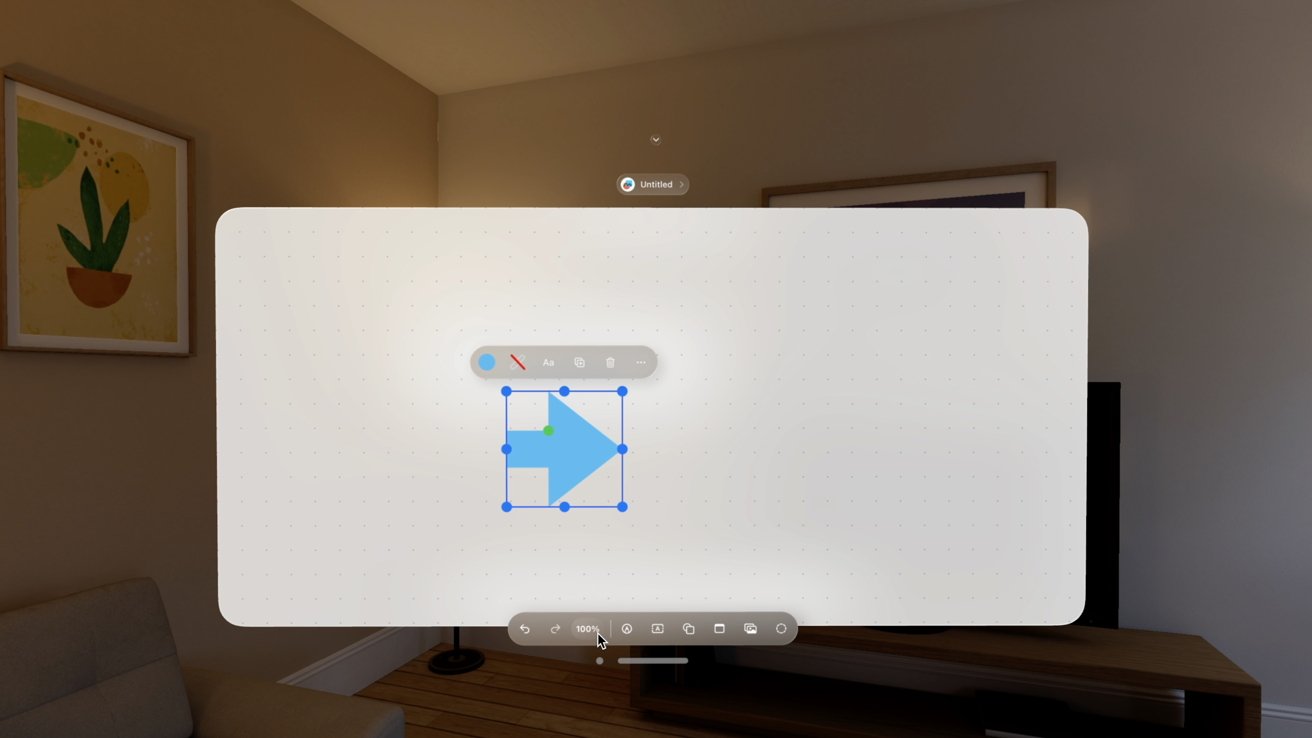
Freeform in visionOS
The Freeform usability is much better here than on iOS, almost like Apple originally developed it with Vision Pro in mind. Like a full-sized virtual whiteboard.
Some stock apps are on Apple Vision Pro now
In the first beta of visionOS, we got our first look at what apps Apple hopes to include with Vision Pro. Many are not available this far ahead of release.
Currently, Apple has working versions of Freeform, Safari, Photos, and Files. These are all native to the visionOS experience.
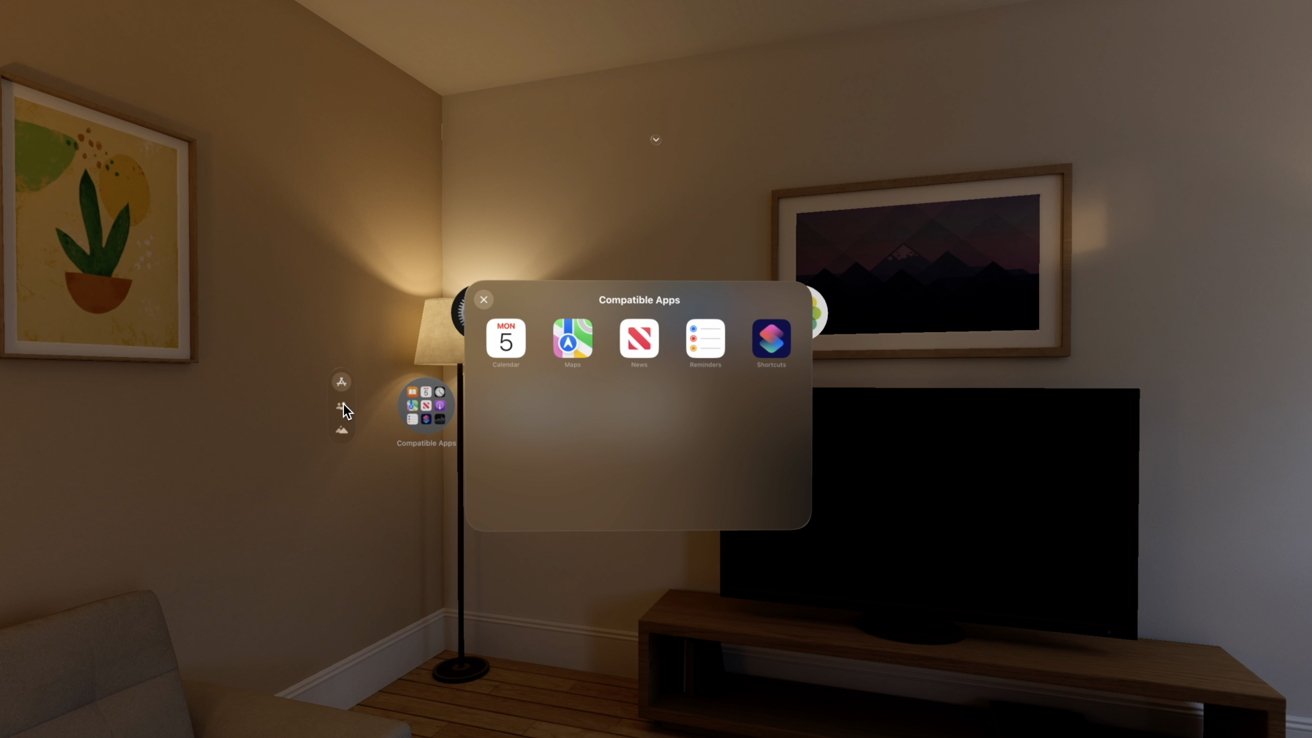
Compatible apps for visionOS
Some apps are merely ported versions directly from iPadOS or iOS. These are listed as compatible apps and right now include Calendar, Maps, News, Reminders, and Shortcuts.
Compatible apps worked fine in the simulator but they didn't scale the same. They had a locked aspect ratio as you resized them.
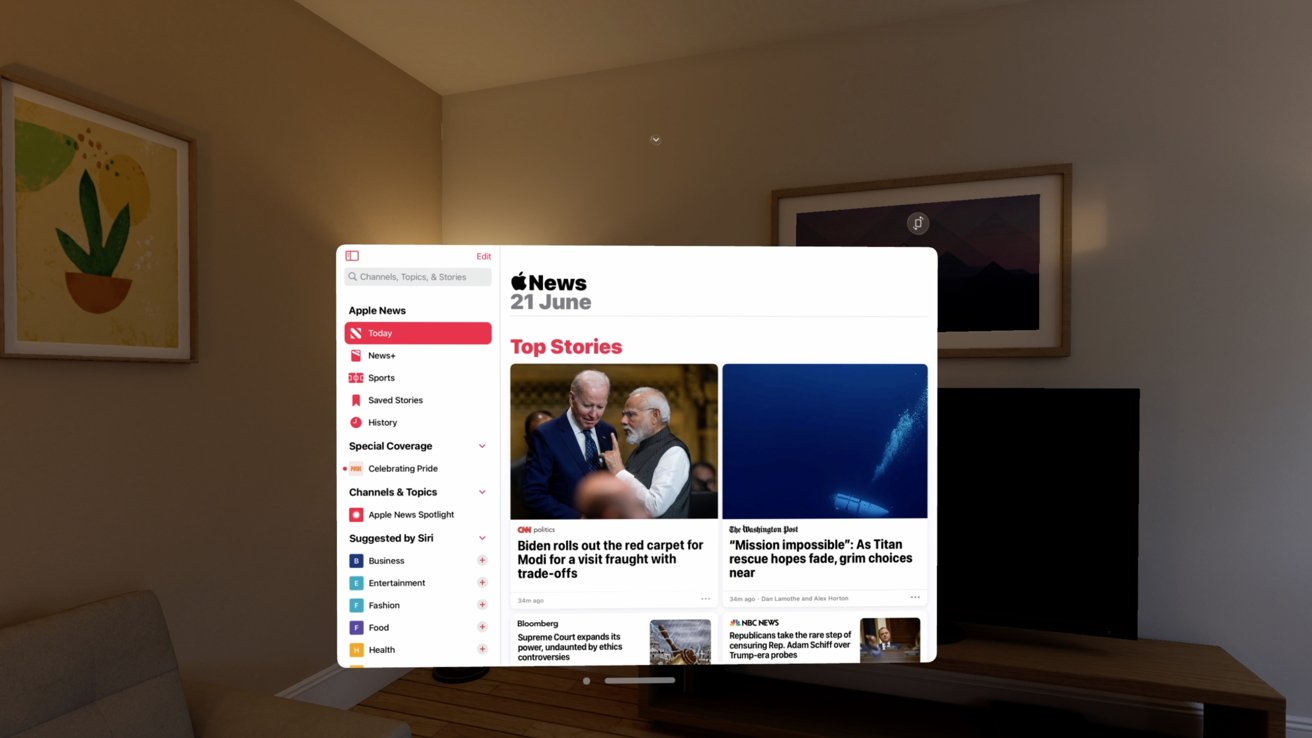
Apple News can change orientation
They also have a little icon in the corner where you can rotate them from landscape to horizontal like you were turning your iPad.
In the simulator, Apple shows icons for Books, Clock, Podcasts, and Stocks -- although they aren't available just yet. On the Vision Pro mini-site, Apple highlights the entire iWork suite, Notes, Messages, Apple TV, and Meditation.
Rumors say there are a lot more apps on the way for Vision Pro, with Apple working on an app for Tai Chi, Nike workouts, yoga, and more. Surely we'll see more as we approach release.
Apple Vision Pro simulator is just the start of a long trip
This is still only a simulator running the very first beta of Apple's new operating system. It will change drastically over the coming years.
That being said, it is impressive. Compared to the limited hands-on time Apple offered in Cupertino, developers and users can play around in visionOS as long as they'd like.
The potential is clear. We're excited to see what Apple and third-party developers will ready by the time Vision Pro starts shipping in 2024.
Read on AppleInsider



Comments
pretty much the only difference is being able to run Xcode. That's the only reason I carry my MacBook with me when I travel.
And there's plenty of scope for it to be useful without running Mac apps. Silly trolling.
https://www.macrumors.com/2023/06/06/apple-vision-pro-mac/
You can pair it with AirPods. You can see it in the intro video when the woman is on the airplane. It will likely work with all headphones that at least support spatial audio. Perhaps a limiter is headphones may need to support higher sample rate rate Bluetooth connections to keep latency at a minimum.
Apple's pass-through VR tech stack looks like it has crossed a vaguely defined level where mass market adoption is possible. The eye and hand tracking looks to have solved a baseline level of UI interaction, like touch and capacitive touchscreens for smartphones, while the R2 and realtime OS frameworks to drive frame rates have addressed motion sickness for a larger portion of the market than existing solutions.
The rest is driving down pricing. I'm thinking it's addressing a potential market size of the combined tablet and PC market where people can use it for entertainment and computing. The utility is there to overcome the difficulties with it being a heavy goggle set, and people will want to wear it even with all its bulkiness.
Apple however is too... opinionated. It really needs to have Terminal.app, just like iPadOS should have, and even iOS. Don't care how they do it, like running DarwinOS in it's own VM, but it is an important part of computing that they need to have on all their computing platforms. tvOS no, but visionOS? Yes.
It probably also needs a wired way to feed Mac displays into the headset to reduce latency. There will be a class of apps that M2, M3, etc, SoCs can't run, and letting a Mac splay all its apps all over the views inside visionOS will be necessary. One workflow that they can do is using a Mac's display and a virtual display inside the headset.
No, he's not even close to being right. Note that he said Apple Vision Pro will be "completely useless and stupid" if it doesn't run macOS apps. Note that Apple's demo showed an OS built around the HW and apps designed for that specific VR and AR usage, not simply Mac apps.
Doing the same thing as a Mac app doesn't make them Mac apps. Safari was first on macOS. The same for Mail, Calendar, etc. but these aren't simply "Mac apps" because they have the same name and provide the same core function as the Mac app. They are designed for that device type. You can now run actual iOS and iPadOS apps on your M-series Macs and at one point could run iPhone apps on your iPad, but that feature was deprecated a long time ago in favor of apps designed for the iPad.
The laptop and the watch are clearly serving a purpose and target audience. The iPad does (amazing for kids!) as it’s positioned for light computing. The iPad Pro doesn’t so much (laptop prices for a crippled experience) but still makes sense.
It is positioned by Apple to compete with normal computers, because they didn’t announce any app to prove otherwise.
Why did Apple announce this?
How exactly do you get this into the hands of developers with an SDK while also keeping it completely quiet?
No. No one said you need one. You don't need any Apple products to function perfectly well in life.
It also has a lot of other things. A lot of other high end things. 2 >4k micro displays. More cameras than I care to count. A dedicated chip to control those camera inputs. If you want to strap an M2 Ultra and associated heat sink to your face in a 2kg package then you'll have to wait.
The Snapdragon in the Quest Pro wouldn't even be able to run the VisionPros screens, and the HoloLens uses an Atom. An Atom! And you're complaining about an M2? It's a great chip.
It does? Who says?
Why not? Also, you can use a mouse a keyboard with it, so do that if you really need that practicality.
The barrier to entry and cost doesn't seem to be there? Well that's great! Otherwise, maybe try it before you decide so clearly how long you'll use it for?
Ok? You don't think 3D experience as a feature differentiates it? Or cinema screens in a device you can pack in hand luggage? Bit weird that you can't since they made quite a big deal about it.
Have you tried the Quest 3? It definitely doesn't "cover it", and I doubt Meta thinks so either, otherwise the Quest Pro wouldn't exist. It's not bad for an entry level product, but it's the cheapest device they could make, and it shows.
It'd be nice to have one, for sure. But the Watch didn't have one, it was realised somewhat later in Fitness. The iPad didn't have one either, still doesn't really, though that doesn't stop it from being a fine device. Hell the iPhone didn't even have a clear killer use case at launch, that came somewhat later with the app store and the possibilities that opened up.
Because Apple gonna do what Apple gonna do. No point whining about it, just enjoy the show.